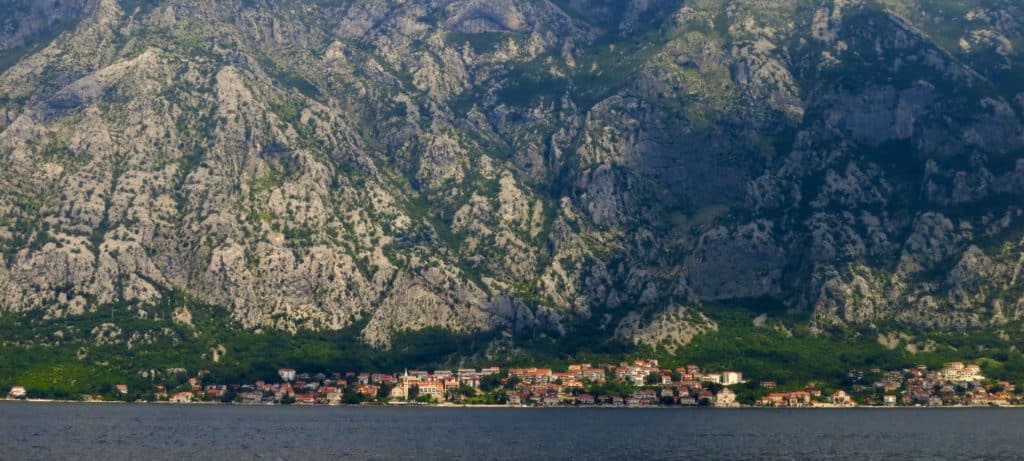
Every once in a while, like the cold, menacing bora wind, rumors circulate around the sailing community in the Mediterranean that the tax authorities are cracking down on foreign yachts that have overstayed their time in the European Union. When the rumors swirl around the bars and marinas, the non-E.U. boats — mostly from the United Kingdom and America — think about spending some time outside of the E.U. The E.U. regulations stipulate that foreign yachts may stay only 18 months before they are liable for the VAT, which can be up to 25 percent of the value of the boat.
Scarlet, our Alan Warwick-designed 47-foot sloop, was in Gaeta, Italy, near Naples, when the rumors began to get intense: customs officials were “seen” writing down boat names and hailing ports; someone knew someone who was presented with a staggering VAT bill. Or maybe they just had to leave that port under cover of night. It wasn’t clear.
Scarlet had been out of the E.U. in Tangier, Morocco, that amazing, totally foreign port, and so was tax-compliant for now, but since we were moving east anyway, a non-E.U. destination seemed like a good idea. Turkey was too far; the North African ports had security concerns; Albania was too mysterious. So Montenegro, some 650 nautical miles away, became the choice.
Getting from Gaeta to Montenegro was no hardship. We called in the Italian ports of Ischia, Salerno, Amalfi, Mount Etna and Otranto at the country’s heel — all highlights of the west coast of Italy. We enjoyed light wind and beautiful harbors with great food. And in late May, we were still ahead of the busy high season. In southern Italy, we began to see the response to the immigration crisis: increased military patrol boats, police boat drive-bys taking Scarlet’s name and hailing port, large rescue vessels headed southeast to the migration routes.
Departing Otranto for Montenegro, we got our first taste of immigration controls: Crew lists, boat documents, passports, last port and next destination needed to be produced and inspected. “Wait here while we review this,” was a constant refrain. The Italian immigration officer looked a long time at our U.S. documentation papers, and finally said, “OK, have a good voyage,” and we left for Montenegro. We were to hear more about our documentation papers soon enough.
Our first port of call in Montenegro was Bar. We chose Bar not because it was supposed to be the most scenic port in Montenegro (it isn’t), but because it was the closest to our path from southern Italy. When calling in Montenegro, you are supposed to enter at the first port of entry you reach. This advice is often disregarded, but since we had been warned that officials in Montenegro were sticklers for regulations, we decided to enter at Bar. Bar has a busy, if dusty, marina. It also has an active downtown with restaurants, bars, shops, farmers markets and a magnificent new promenade along the waterfront for strollers of all ages, kids on bikes and swimmers walking to the beaches. By the way, farmers markets are the best place to buy food in Montenegro. We found vegetables, fruit, sausage, bread, cheese and even homemade moonshine. The vendors were glad to see tourists.
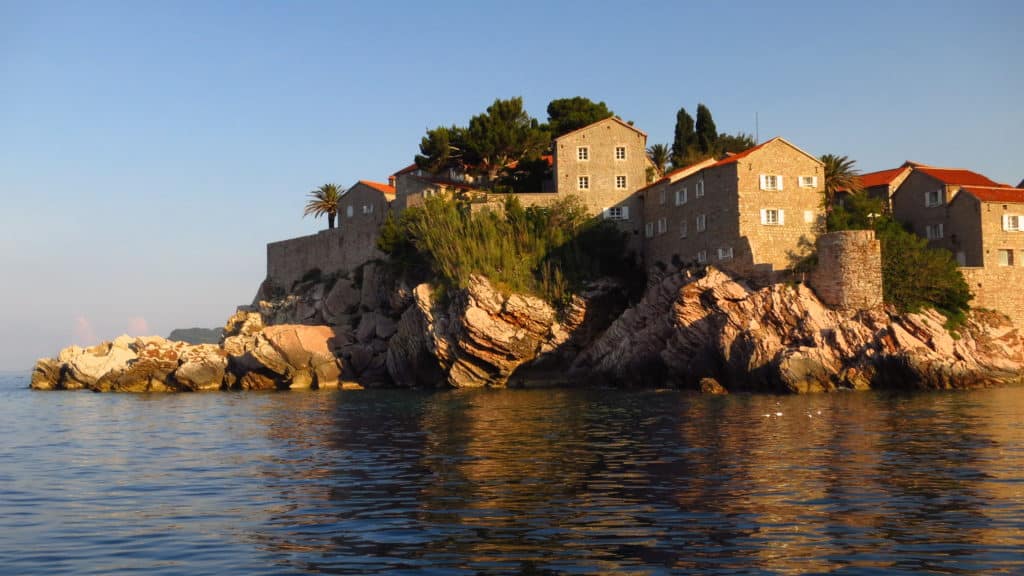
Bar also introduced us to the intricacies of Montenegrin customs and harbor police. The first stop was at the police station, then on to customs, and finally to the harbor master. There we were greeted by a large, serious-looking officer who asked for our passports, boat papers, insurance policy and crew list. The first hurdle was insurance. “It is not enough,” he said. I was beginning to get a sinking feeling, but a call to our insurance agent upped our liability coverage the next day. The officer was also taking too much time with the boat documentation. “It is out of date,” he said. And, sure enough, it was last year’s documentation, which had expired a few days prior. (Since we were on the boat when the new document was mailed to my home address, I’d asked to have it emailed to me on board. I received last year’s doc instead and never noticed.)
The officer was understanding but firm: We needed the new paperwork before we left Bar, but in the meantime, we could enjoy our stay there. Montenegro also requires a “skipper’s license” to get a cruising permit, or “vignette.” We couldn’t get a definition of what constitutes a valid skipper’s license, but my state-issued boating safety card was accepted. The authorities understand that Americans often don’t have boating licenses or certificates, as many Europeans do. Nevertheless, the regulation is enforced.
We became regulars at the harbor master’s office. We used its fax machine, copier and Wi-Fi to send and receive documents, and chatted with the staff. For two days. Finally, we received our paperwork and vignette, and were at last ready to cruise Montenegro, one of the most beautiful sailing grounds I have ever seen.
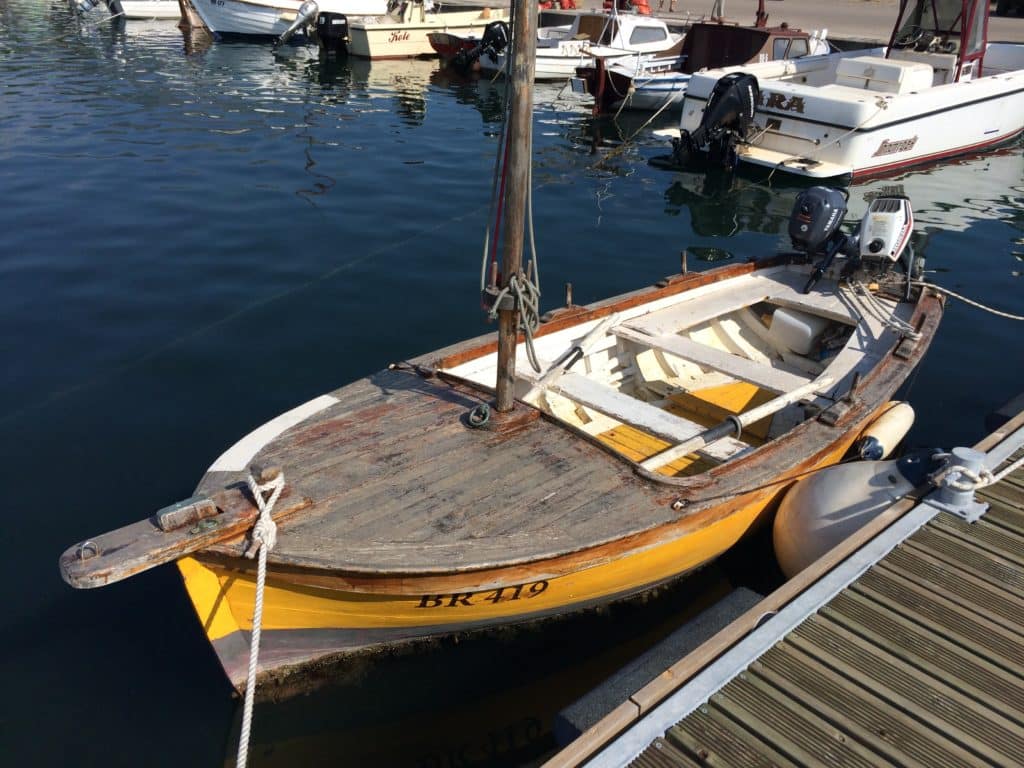
The coast of Montenegro is small, only 55 miles from the border with Albania to Croatia. After decades of isolation, Albania is only beginning to be explored as a cruising ground, and Croatia, with its hundreds of islands, is now a well-established sailing destination with thousands of charter boats cruising its protected waters.
But Montenegro is an anomaly. It has only been an independent country — as it was in the past — since 2006, following the breakup of Yugoslavia. War took a heavy toll on Montenegro, and the financial collapse of 2008 derailed some large construction projects, which stand empty today. But investment is now flowing again into the country, as witnessed by two deluxe marinas: a finished one at Porto Montenegro and another development under construction at Herceg-Novi. The Montenegrin standard of living is now one of the highest in the area.
Our goal from Bar was the Gulf of Kotor, 35 miles to the northwest. But this was not passagemaking. This was daysailing, with the first stop at Sveti (St.) Stefan, the site of a reconstructed 16th-century administrative center on a very small island connected by a causeway. Sveti Stefan was originally built with gold bars taken from pirates attacking Kotor. It’s now a luxury hotel but looks for all the world like it probably did when pirates and raiders roamed these waters.
We anchored to the south of the island, near a police boat on guard duty. The cheerful officers said they were guarding “the big bosses” on the island. When we said how much we liked Montenegro, one replied, “Of course! Why not?” and added, “I have a cousin in the Chicago police.” Our younger crew swam ashore to the pristine beach while the older crew napped aboard.
The next day, passing the beaches of Budva (party central, aka the Adriatic Riviera), we entered the jewel of Montenegro: the Gulf of Kotor, a nearly landlocked fjord with 5,000-foot-tall mountains coming right down to the water. The sea is bright-blue, and the mountains often dark and sometimes brooding, hence the name Montenegro, or “black mountain.”
Our next stop was Porto Montenegro, a five-star marina in Tivat recently developed on the site of an old navy base. The word “deluxe” hardly does justice to Porto Montenegro. The berths are pristine, the staff accomplished and English-speaking, the prices sky-high. There are restaurants, hotels, trendy boutiques, a chandlery and a laundromat (our laundry bill approached the replacement cost of the clothes they washed). Spectacular superyachts of the 150-foot-plus variety are based there, said to be owned by Russian millionaires.
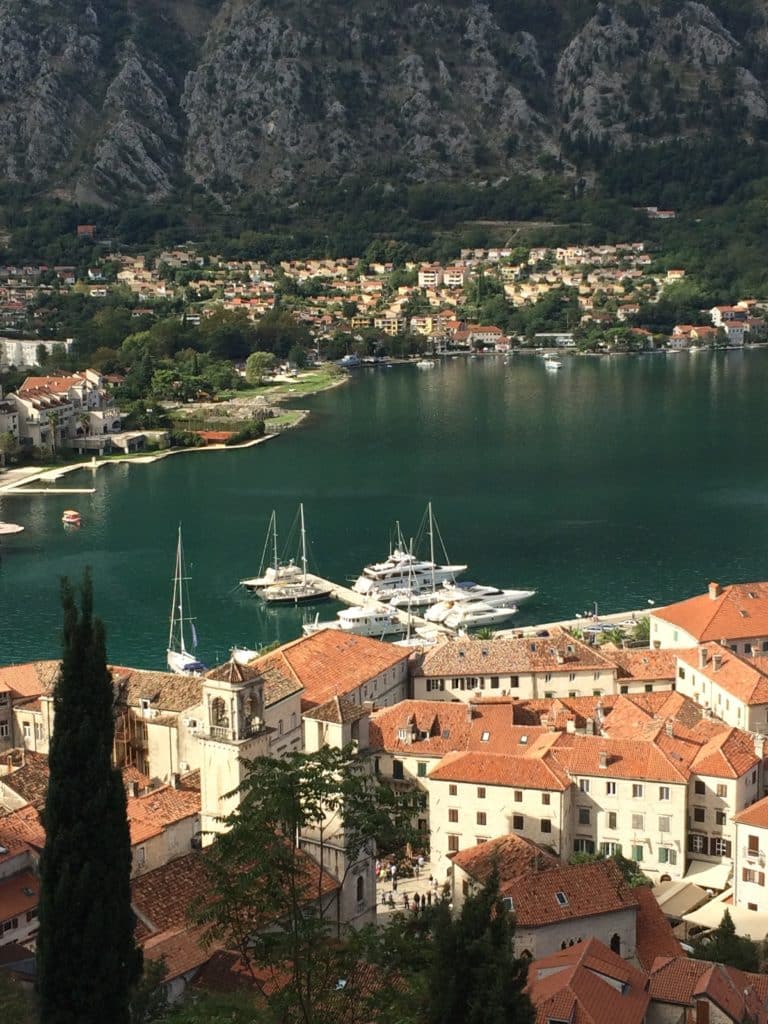
We left Scarlet for the high-season summer months on the hard at the Navar boatyard a mile or so away — the Porto Montenegro staff made the arrangements when I explained to them that keeping the boat in the water at their facility, unused during the high season, was a budget buster. As usual, they were happy to oblige.
We returned to Scarlet in October to continue our cruise through Montenegro and north to Croatia.
Although the Gulf of Kotor is only 10 miles from the entrance to the head of the bay at Kotor, it is well worth spending some time there. There are marinas at Herceg-Novi, an old sea captains’ town; Tivat (Porto Montenegro); Perast; and Kotor, with its 15th-century defensive wall climbing the cliffs in back of the town. There are lots of anchorages — some marked on the charts, some not — and it’s possible to pull up to the jetties in front of waterside bars and restaurants for a meal. Proceed slowly. If the jetty is not suitable, you will be waved away.
The architecture is Venetian, marking that city’s long importance to the area, with whitewashed buildings and red-tile roofs. Much of the shoreline has walking trails to stretch your legs.
But mostly, sailing in Montenegro is about the scenery: black mountains plunging to the sea, warm blue water and lovely buildings. History is present everywhere, both recent and from many centuries past. Much of that history is violent, involving pirates, Turkish raiders, two world wars and the recent Balkan conflict. I couldn’t help but admire the persistence and good humor of the Montenegrins. And maybe, I got the feeling when sailing there, their best time is coming now.
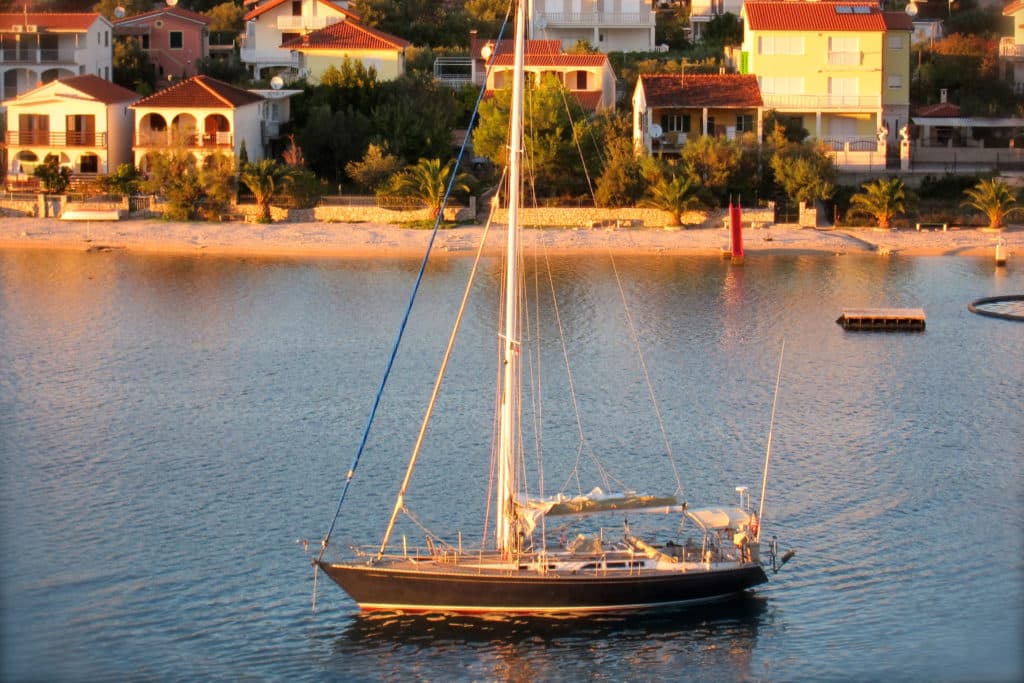
Weather and Chartering Information
Summer weather in Montenegro is beautiful: hot and sunny. Light breezes from the north or south predominate.
In spring and fall, the weather is more varied. Our May cruise there was like summer, our October trip had moderate winds from the north and south, which increased in the narrow funnels between the headlands and islands. Bora winds from the north are bright and cool and can blow hard for up to three days. We spent 24 hours at anchor during a bora with wind gusts to 50 knots. The sirocco wind blows from the south, with rain, clouds, thunder and lightning. Our sirocco was very dramatic, with white clouds tumbling down the black mountain faces, illuminated by horizontal and vertical lightning. The rainsqualls had Scarlet heeling at anchor and tacking back and forth as the fronts changed direction. We stood anchor watch all night, and in the morning the wind subsided. The area also has katabatic winds, cold blasts down the mountain faces, but we were spared those.
Weather information is easy to get in Montenegro. Wi-Fi is readily available in marinas and restaurants, and maritime weather forecasts like those found at meteo.hr are easy to access, usually in the local language and English. Most marinas post forecasts at their offices. VHF weather is available, though the schedule can be hard to track. Be wary of nonmarine forecasts, which regularly underestimate the local wind strength.
Nearly every marina mentioned in this article is also a charter-boat base. (And in nearby Croatia, there are said to be about 4,000 charter boats!) Two of the leading charter companies are Navis in Porto Montenegro and Yachtico in Bar and Herceg-Novi. The boats look new and well cared for, and run the gamut from 34-footers to 60-footers, with crew or without, and available in flotillas or independently. There are also classic yachts and gulets, those stately motorized ketches one sees throughout the eastern Med. If you charter in Montenegro and wish to cross the border to Croatia or Albania, check with your charter company first.
– – –
*Spencer Smith has been cruising the Caribbean, Atlantic islands and the Mediterranean since 2010. His Warwick 47, Scarlet, is crewed by friends, relatives and college-age recruits new to sailing. *








